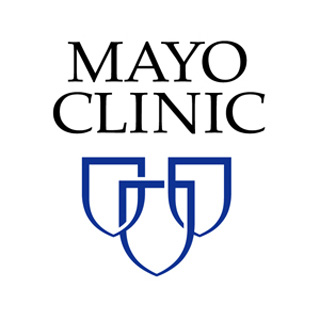Ultrasound Greater Occipital Nerve Block at C2 Level Compared to Landmark-based Greater Occipital Nerve Block
| Status: | Recruiting |
|---|---|
| Conditions: | Migraine Headaches |
| Therapuetic Areas: | Neurology |
| Healthy: | No |
| Age Range: | 18 - Any |
| Updated: | 4/17/2018 |
| Start Date: | July 17, 2017 |
| End Date: | January 2019 |
| Contact: | Suanne M Weist, BSN |
| Email: | weist.suanne@mayo.edu |
| Phone: | 507-255-6804 |
Ultrasound-guided Greater Occipital Nerve Block at the C2 Level Compared to Landmark-based Greater Occipital Nerve Block: A Randomized Controlled Trial
This study will compare the analgesic benefit of a traditional landmark-guided GON block with
the ultrasound-guided approach over a four week period in patients with occipital neuralgia
or cervicogenic headache.
the ultrasound-guided approach over a four week period in patients with occipital neuralgia
or cervicogenic headache.
Hypothesis: A novel ultrasound-guided greater occipital nerve (GON) block at the level of C2
will result in significantly lower pain scores after 4 weeks when compared with a traditional
landmark-guided approach at the superior nuchal line.
The greater occipital nerve (GON) has been implicated in several conditions that prompt
referral to pain medicine specialists, including occipital neuralgia and cervicogenic
headache. According to the International Headache Society, a local anesthetic block of the
GON can aid in the diagnosis and treatment of occipital neuralgia. Many practitioners perform
GON injections using a conventional approach, relying solely on superficial bone-based
anatomic landmarks to infiltrate local anesthetic and corticosteroid around the nerve at the
level of the superior nuchal line. The ambiguity of these injections poses a risk of
anesthetizing adjacent structures or injecting into vessels, such as the occipital artery.
In an attempt to mitigate these risks and improve the efficacy of GON injections, ultrasound
has been increasingly utilized. Multiple studies have demonstrated successful
ultrasound-guided GON blockade at the superior nuchal line and improvement in pain scores
compared to non-guided injections. The investigators' preliminary data confirms the
feasibility, efficacy, and safety of an ultrasound-guided GON block technique at the level of
C2, but it is not yet known whether this technique provides greater pain relief and
functional outcomes compared to traditional injections.
will result in significantly lower pain scores after 4 weeks when compared with a traditional
landmark-guided approach at the superior nuchal line.
The greater occipital nerve (GON) has been implicated in several conditions that prompt
referral to pain medicine specialists, including occipital neuralgia and cervicogenic
headache. According to the International Headache Society, a local anesthetic block of the
GON can aid in the diagnosis and treatment of occipital neuralgia. Many practitioners perform
GON injections using a conventional approach, relying solely on superficial bone-based
anatomic landmarks to infiltrate local anesthetic and corticosteroid around the nerve at the
level of the superior nuchal line. The ambiguity of these injections poses a risk of
anesthetizing adjacent structures or injecting into vessels, such as the occipital artery.
In an attempt to mitigate these risks and improve the efficacy of GON injections, ultrasound
has been increasingly utilized. Multiple studies have demonstrated successful
ultrasound-guided GON blockade at the superior nuchal line and improvement in pain scores
compared to non-guided injections. The investigators' preliminary data confirms the
feasibility, efficacy, and safety of an ultrasound-guided GON block technique at the level of
C2, but it is not yet known whether this technique provides greater pain relief and
functional outcomes compared to traditional injections.
Inclusion Criteria:
1. Unilateral or bilateral headache symptoms attributed to occipital neuralgia or
cervicogenic headache as defined by the International Headache Society's International
Classification of Headache Disorders (3rd edition beta version)
2. Age 18 years and older (no upper age limit defined)
3. Imaging of cervical spine within last year (either x-ray, MRI or CT)
Exclusion Criteria:
1. History of cervical spine surgery, trauma, or surgical procedure involving head or
neck during the last year
2. Use of new preventative medications 1 month prior or during study enrollment
3. Evidence of impaired sensation in the GON dermatome region (posterior scalp to the
vertex of the cranium) from neurological, dermatological, or other disease process
4. Evidence of cranial defect or other anatomical abnormality near the target injection
site
5. History of bleeding diathesis, coagulopathy, or current use of anticoagulant
medications
6. Pregnancy
7. History of adverse reaction or allergy to local anesthetic agents or corticosteroids
8. Occipital nerve block within the past three months.
9. Unavailability for appropriate follow-up throughout the whole duration of study
We found this trial at
1
site
Mayo Clinic Rochester Mayo Clinic is a nonprofit worldwide leader in medical care, research and...
Click here to add this to my saved trials
